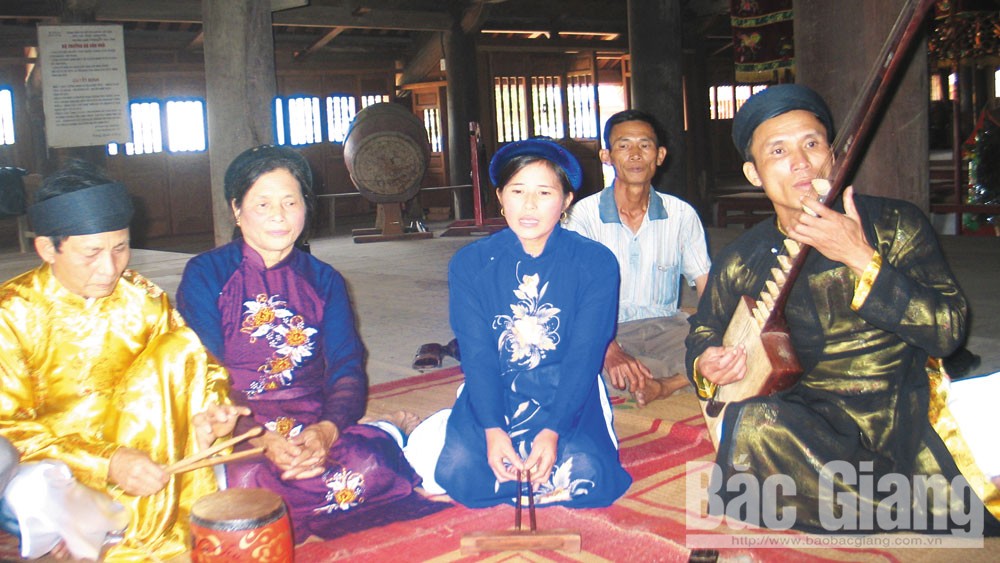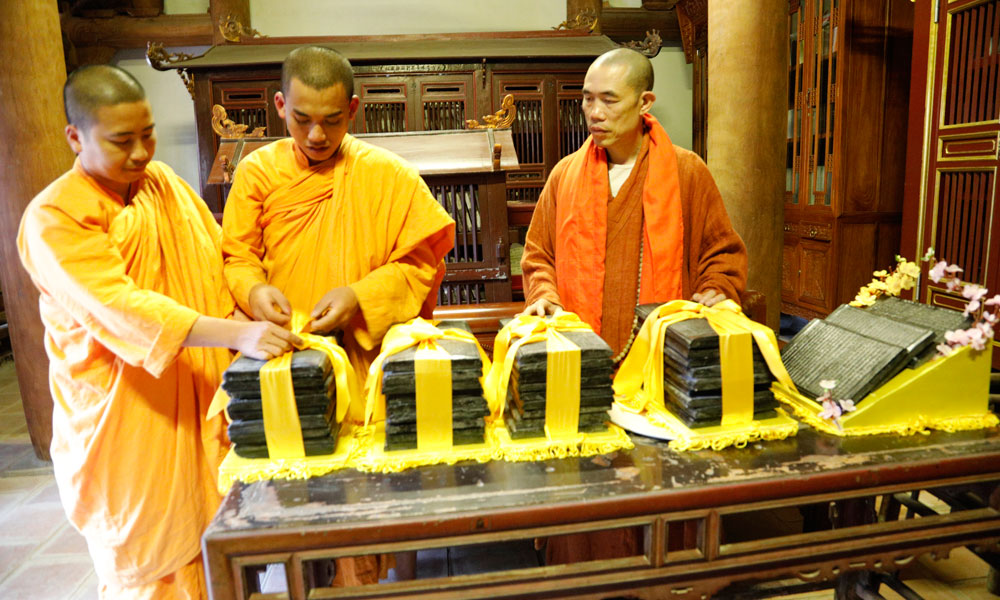Reviving Ca tru in Dong Lo commune
That has proved the birth and development of Ca tru (ceremonial singing) art in this countryside. Experiencing ups and downs of history, people in the region still preserve this traditional cultural heritage.
 |
|
Performing Ca tru in Lo Hanh communal house, Dong Lo commune. |
More than 10 years ago, UNESCO’s recognition of Ca tru blew a new breath of life to the heritage, helping it revive. With her love for this art, for many years, Nguyen Thi Cong (72 years old), head of the Ca Tru club of Cham village, Dong Lo commune has been passionate about the sounds of instruments and songs of this unique ancient music.
All year round, her hands were covered with mud, but Cong still arranged appropriate time to maintain the Ca Tru club of Cham village to pass to the younger generation the beauty and the passion in each song.
Cong shared that seeing the children were very interested in Ca tru, the members of the club arranged time to teach them how to sing and play the instruments.
Inheriting the passion of Ca tru art from his father, male instrument player Tran Van Son (33 years old) - a member of the Ca Tru Club of Cham village is always proud of the sounds of ‘dan day’, the beats of ‘phach’ (small wooden sticks beaten on a small bamboo platform), and the unique melodies of his homeland.
Now, that passion continues to be transmitted to his little daughter. Practicing Ca tru singing with grandmothers, mothers, uncles and aunts in the club, children who are only 7 or 10 years old in Dong Lo, though they do not thoroughly understand the meaning of the lyrics, are still fascinated by the melodies and the beats of ‘phach’.
To restore and promote the cultural value of Ca tru, since 2010, the People's Committee of Dong Lo commune has established three Ca tru clubs in Khoat, Chung and Hung Dao villages, with nearly 30 members.
Now, Dong Lo commune has another club in Cham village, raising the total number of members to more than 50. They are farmers with farm work all year round but they always carry a love of heritage and enthusiasm to preserve the unique culture of the ancient land.
Sharing the communal house in the middle of three villages, the Ca tru clubs organize their activities periodically twice or three times every month, together practicing new ways of singing and new songs.
According to Tran Duy Hung, a cultural officer of Dong Lo commune, in order for Ca tru to come closer to the public, the commune has created conditions for members of the clubs to exchange and perform. In Dong Lo commune, the performances of the Ca tru clubs are indispensable in art shows.
At the same time, the commune has allocated funds to support the training and transmission of Ca tru art as well as the purchase of costumes, musical instruments and some specialized equipment for the clubs.
Nguyen Thi Cong, head of the Cham village Ca tru club, further said that the club's management board came to every house, lobbying gifted children who love Ca tru to learn to sing and play the drum and ‘dan day’.
Experiencing many ups and downs, Ca tru in Dong Lo has been reviving and is being preserved by "farmer artists" such as Cong and Son. Although there are still many worries in life, the good news is that more and more people love Ca tru.
This is really a cultural beauty in the ancient land of Hiep Hoa, which not only enriches the spiritual life of the people, but also contributes to preserving the intangible cultural heritage of humanity.
The spring brings in hope for good changes. The image of people coming to Lo Hanh communal house to watch female vocalists and male instrument players perform shows the vigorous vitality of Ca tru here.
Phuong Nhung
 Bắc giang
Bắc giang















Reader's comments (0)